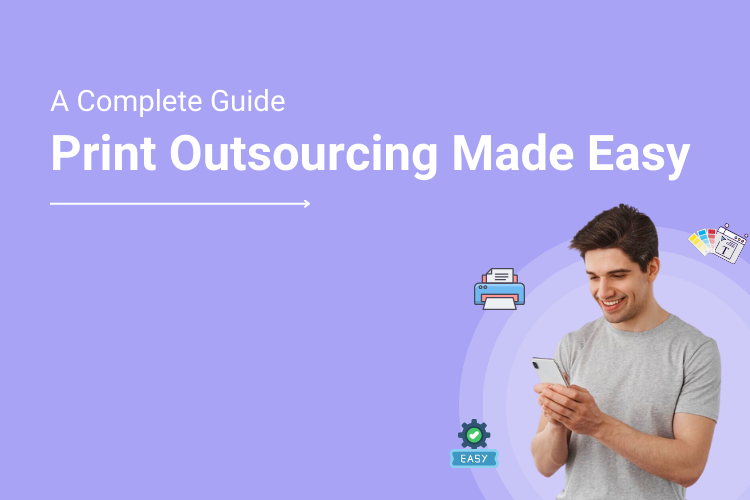The global commercial printing industry has experienced exponential but steady growth in the past five years. The new and improved consumer demand conditions, advancement in technologies, and the prompt adoption of eCommerce have added to increased revenues for printers worldwide.
Therefore, what doesn’t surprise us is the use of web-to-print technology for customizing and placing orders on all types of printed products such as t-shirts, mugs, uniforms, marketing brochures, and so on.
With a simple search, consumers across the globe can browse through thousands of web-to-print websites and purchase print-ready items from local suppliers at an affordable price. No wonder, North America will become a $20 billion market for web-to-print technology by 2023!
However, as a successful print solution provider with a growing business, fulfilling each and every order on your own may not align with your production capacity and business goals. It thus makes sense to make full use of a web-to-print solution.
Here is a quick guide to making this work for your business:
1. Identify the print products that are in a demand

The first step is to determine which of the ready-to-print products are highest in demand in the market – and, therefore, are worth selling on a web-to-print platform to simplify the production process.
Typically, niche products will have low demand and require specialized attention, which means that you should ideally handle it yourself. However, products that get ordered in bulk, such as corporate gifts or marketing flyers, are much faster and cheaper to print if you use a web-to-print solution.
Do thorough research to find out the type of products you want to sell. The list could include photo books, printeriors, labels and stickers, digital fabrics, custom boxes, and more.
2. Find print vendors to fulfill orders
Depending on what you want to sell, you will find that there are multiple print vendors out there who can help you with what you are looking for. Please do your research on the quality of services they offer, which industries they have experience in, and what their customer reviews look like.
You can even ask for sample custom products to review the end-products your customers will receive on buying from your online printing website.
Other factors you should consider are the pricing plans and flexibility they offer in terms of order quantity and customizations. Hyper-personalization is everything for consumers these days, and your web-to-print solution should be able to provide that.
Don’t forget: Complete Guide of Print On-demand eCommerce Business
3. Search for the most suitable web-to-print solution provider
One of the first things to do is check out the features they offer, which industries they have experience in, and what their client reviews look like. The web-to-print solution provider should be communicative and helpful about how their software works.
During the initial discussions, you should be able to ask for a custom demo or a detailed consultation call where you are shown all the details of the software, pricing programs, and customer service to make an informed decision.
4. Finalize a W2P provider
Once you have decided on which software provider to go with, discuss what your partnership will look like. The most common business models are renting on a software-as-a-subscription (SaaS) basis or owning it as a perpetual license.
Please make your choice depending on the resources you have at your disposal, how much time it will take to implement the solution, scope for customization depending on your business needs, and so on.
5. On-board your team and vendors on web-to-print

The on-boarding of your new web-to-print solution will typically call for a separate project management team. Tasks involved include server setup, designing a new website with appropriate content creation and SEO, and communicating with the software provider about any difficulties your team runs into.
Moreover, your product vendors would also need support when it comes to using the solution. Since they will manage orders placed on their products from the back-end, they must be able to use the W2P platform conveniently.
6. Add print products and configure pricing on the W2P platform
Take the product catalog along with pricing from your print vendors and share the same information with the web-to-print provider in a spreadsheet format that they are comfortable using.
Besides, share your pricing formula so that they can incorporate it into the software with all necessary customizations and adjustments for bulk orders, making it easier for your customers.
You should also check which payment gateway solutions their software supports and get them integrated. Ideally, it should be a list of payment gateways that most countries use, such as PayPal, Authorize.net, Stripe, and GooglePay.
7. Simplify the process of order assignments
Assess with your team how orders should be assigned on the web-to-print solution, whether manually as each order comes in or automatically through the system. This depends on whether any interventions are needed from your side in terms of customization and product specification before the web-to-print solution is made available for use to consumers.
8. Set up a notification system on the system
Your web-to-print website should include a dashboard that sends notifications to everyone in your team including print vendors about new orders placed or orders modified by the customers. This way, orders can be processed promptly, and you can keep track of how things are moving at any point in time, thus enabling faster and error-free fulfilment.
9. Set up shipping and delivery conditions
Choose a reliable shipping and delivery partner that caters to all the locations you plan to sell to. They should be equipped with tracking pages so that your customers are always in the know about where their orders are.
The higher the volume of orders you receive, moreover, the greater the need for automation in logistics. The application program interface should also keep the shipping partner in the loop about how many orders have come in and when they need to be picked up.
10. Discuss the return and refund policies
Discuss the refund and return policies with your print vendors and reach a mutually agreeable set of terms to get it configured into your web-to-print platform. Often, online printers that are into customization don’t accept returns or give only partial refunds.
Therefore, decide what terms suit you best while also allowing customers the flexibility to reject orders. For instance, you could agree upon a window within which order cancellations will be free of cost, after which the customer will need to pay a small fee.
You can also agree that items with heavy customizations can be returned only for a 50% refund. All of that needs to be integrated within the web-to-print software solution.
11. Discuss payment terms with print vendor
Discuss and mutually agree on the terms of the payment with your print vendors. You can either go for a weekly payment cycle or choose to clear payment for all print jobs which are done on a month-to-month basis.
It is important to get all the financial discussions out of the way so that they can sell comfortably on your web-to-print storefront.
Wrapping up
Having a web-to-print software solution can make all your printing operations smooth and enable you to focus on doing more of what you love, i.e., growing your business with aggressive marketing and sales tactics.
If you are looking to outsource your printing to a web-to-print solution, get in touch with us, and we will tailor a platform that is best suited to your business requirements. Call us on +1-347-647-9799, or drop us a line at [email protected] and will reach you promptly.




